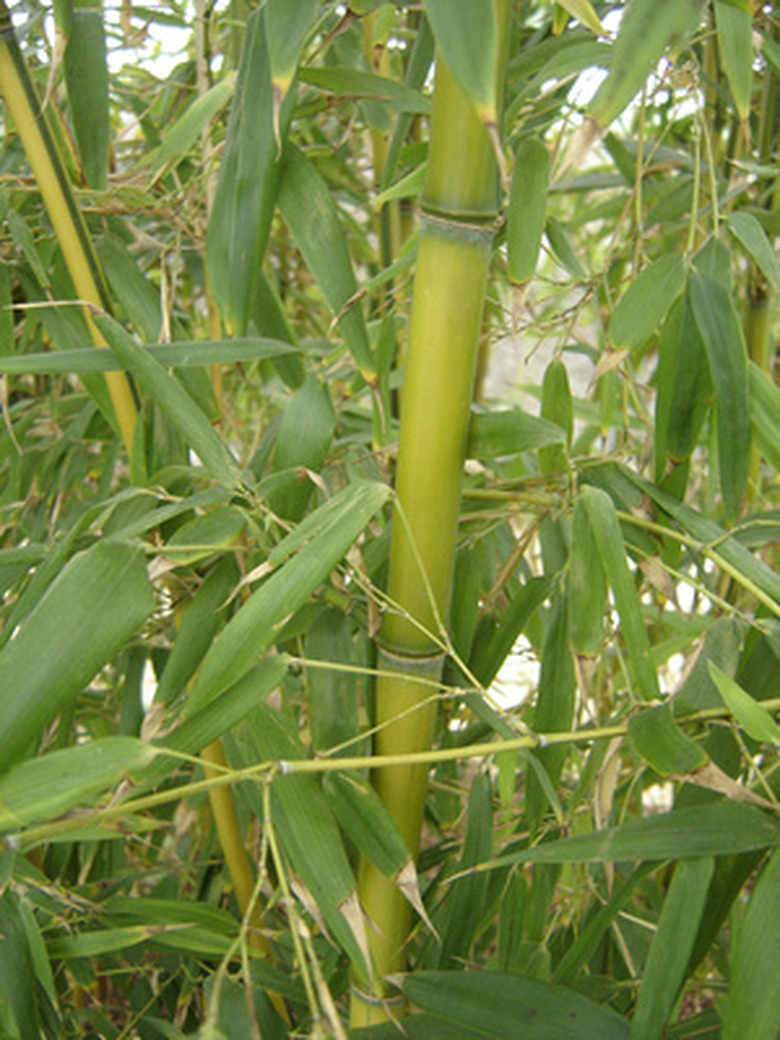Bamboo Plant With Yellow Leaves
Although some bamboos may have yellowish green stalks, when they are healthiest and in their peak growing season, bamboo leaves should be green. If you see yellowing on your leaves, it may be time to analyze the care of your bamboo. In some cases, however, yellowing of bamboo leaves may be a natural part of the plant's growth cycle.
Spring Growth
In the spring, the leaves of many bamboo plants will turn yellow and drop off. This is normal and is nothing to worry about. If you can, allow the dropped leaves to act as a mulch and return to the soil. Bamboo leaves are high in nitrogen and will act as a natural fertilizer for your grove.
- Although some bamboos may have yellowish green stalks, when they are healthiest and in their peak growing season, bamboo leaves should be green.
- If you see yellowing on your leaves, it may be time to analyze the care of your bamboo.
Too Much Sun
Some varieties of bamboo require partial sun or even full shade. Some bamboos, if exposed to full sun in hot, dry climates, may suffer from a yellowing of the leaves. Although technically not a bamboo, lucky bamboo leaves can yellow from too much sun. Lucky bamboo is actually a form of water lily. Remember when planting bamboo that it lives under a protective forest canopy in nature.
Water
Although bamboo leaves tend to curl when the plant needs water, if the plant is under-watered long enough, the leaves may yellow. Conversely, some bamboos may suffer from yellow leaves if over-watered or planted in soil that does not drain well. The leaves of most bamboo will noticeably droop, however, before the leaves begin to yellow. According to the On Thai Time website, excessive fluoride in tap water can sometimes lead to leaf yellowing.
- Some varieties of bamboo require partial sun or even full shade.
- Although bamboo leaves tend to curl when the plant needs water, if the plant is under-watered long enough, the leaves may yellow.
Fertilization
In some cases, leaves on a bamboo can turn yellowish if the bamboo is either under-fertilized or over-fertilized. Do not fertilize your bamboo during its first year of growth. Fertilizing the first year, according to the Natural Resources Conservation Service, can shock and kill your bamboo.
Soil
Most bamboos prefer acidic soils. The leaves on some bamboo can become yellow if grown in soil that is too alkaline. If other techniques of fixing a problem with yellowing leaves fails, have your bamboo soil tested for acidity.
